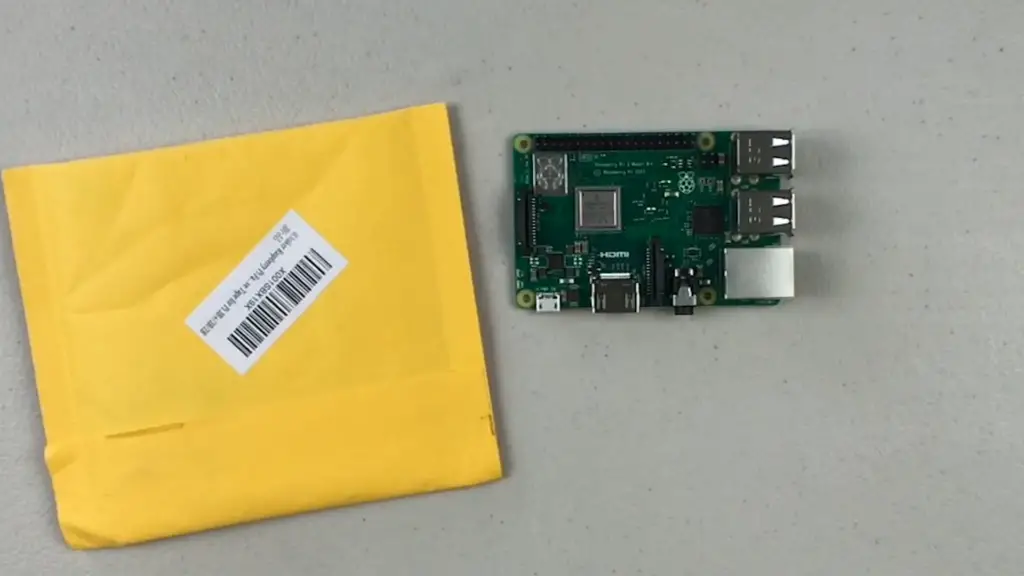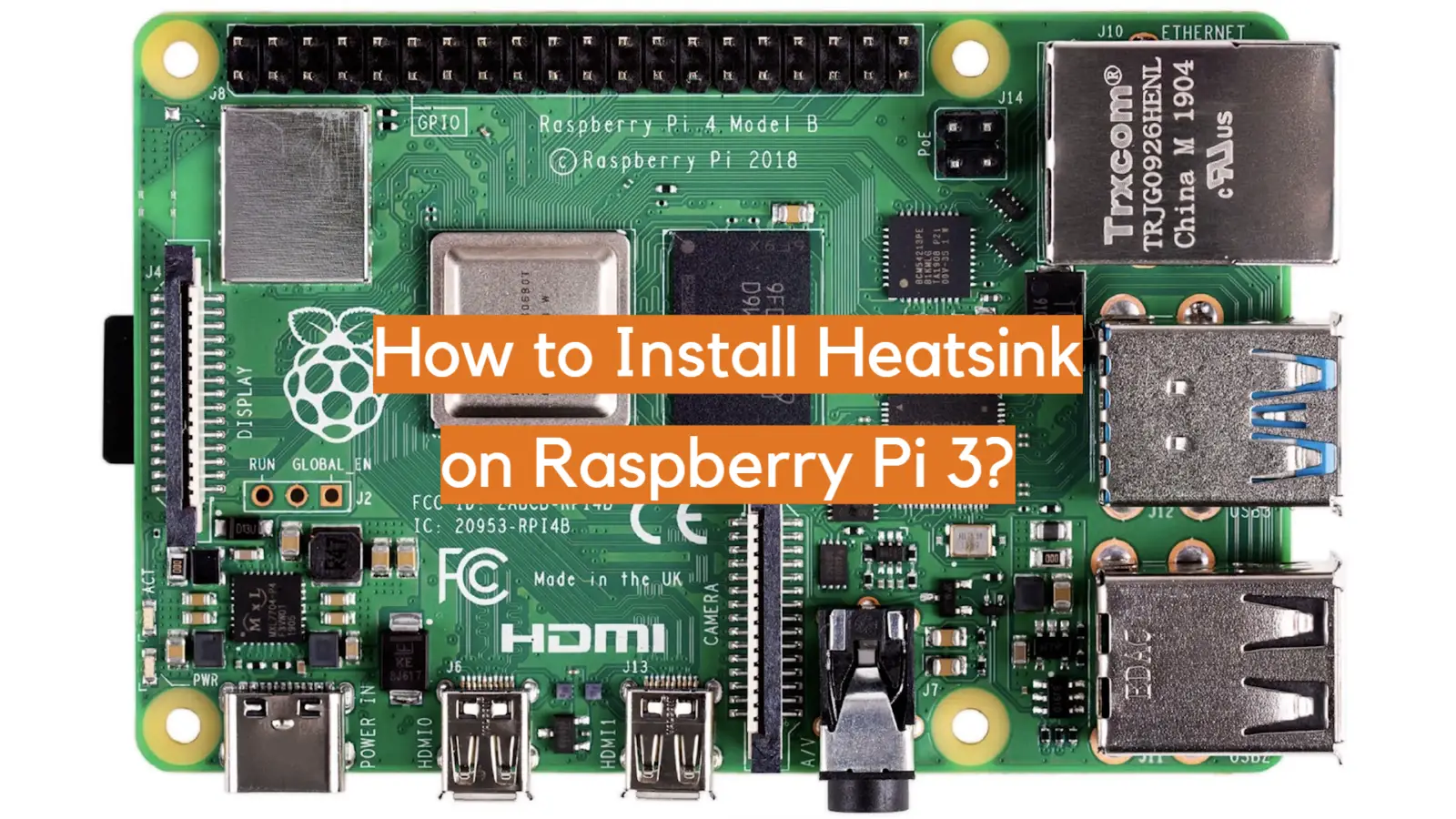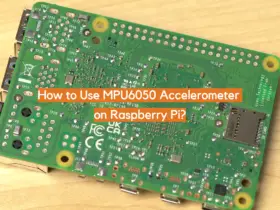Are you looking to get the most efficiency out of your Raspberry Pi 3? Are you aware that inadequate cooling can be a major cause of failure for your device? If so, installing a heatsink may just be the solution you’ve been searching for. A heatsink is a passive cooling component designed to draw heat away from other components in an electronic system like a computer. Installing one into your Raspberry Pi 3 will not only keep it running smoother and more efficiently, but also prevent damage caused by overheating. In this blog post we’ll discuss the specifics of installation and why it’s worth investing in a heatsink for your Raspberry Pi 3. So if you’re ready to give yourself peace of mind and optimize performance, let’s begin!
What is Raspberry Pi and How Does It Operate?

It also offers great flexibility, as it can be used for a wide range of different projects and applications. It has been used to create powerful robots, complex media systems, home automation systems and much more.
The Raspberry Pi is powered by an ARM processor which is similar to those found in many modern smartphones. This allows the computer to handle multiple tasks at once while still having the power to remain energy efficient. The computer also comes with a number of input and output ports which allow users to easily connect devices such as keyboards, mice and monitors.
The Raspberry Pi also has its own operating system called Raspbian which is designed specifically for the device. This allows users to perform all of their basic computing tasks without having to install any additional software. The operating system also includes a range of applications and tools to help users complete many different tasks.
With its many applications, the Raspberry Pi can be used to create all sorts of projects from controlling robots to creating complex media systems. Thanks to its energy efficiency and low cost, the Raspberry Pi is an ideal choice for students and hobbyists alike who are looking to explore the world of computing. With its great flexibility, it can be used for a wide variety of projects without requiring too much effort or money.
No doubt about it – the Raspberry Pi is one of the most popular credit card sized computers around. Its affordability, versatility and energy efficiency make it an ideal choice for hobbyists, students and DIY enthusiasts. With its powerful processor and extensive input/output ports, the Raspberry Pi can be used to complete a wide range of tasks and projects – from creating robots to home automation systems. [2]
Who is Raspberry Pi Useful for?
Raspberry Pi is widely used by hobbyists, students, parents, and tech professionals who want to learn more about computer science. It can be used to develop programming skills, create projects such as robots and home automation systems, or even build an entire computer network! [3]
The small size of the Raspberry Pi makes it easy to integrate into existing systems and makes it much easier to carry around. It is perfect for those who want to get into computer science and may not have the resources or the space available to purchase a more expensive device.

For educators, Raspberry Pi can be used as an effective teaching tool. By utilizing its capabilities, students can gain insight into coding, programming, and problem-solving skills while also having fun. Teachers can use it to create projects, demonstrations, and simulations to help engage their students in STEM (science, technology, engineering, and math) topics.
It is also useful for anyone wanting a low-cost way to get into robotics. With Raspberry Pi’s advanced capabilities and large community of creators and developers, users can quickly find ways to build robots, from simple constructions to more complex machines.
The Raspberry Pi is an interesting and useful device that can be used for a variety of purposes. From learning computer science basics to creating complex robotic projects, there are endless possibilities available with the Raspberry Pi. Those interested in getting into robotics or computer science should consider this device as it provides users with a low-cost and powerful platform to explore.
For professionals, the Raspberry Pi’s internal components can provide insight into hardware architecture and design. By mastering it, tech pros can gain valuable insights on how systems function and develop a better understanding of low-level programming. The Raspberry Pi also provides professionals with an inexpensive way to prototype their products without having to purchase expensive equipment. [4]
Which Raspberry Pi Models are the Most Preferred?
The Raspberry Pi is a versatile and powerful mini computer that has become wildly popular with makers, developers, hobbyists, and tinkerers alike. With its small form factor and low price tag, the Raspberry Pi makes it easy to bring your projects to life. But with so many different models of Raspberry Pi available on the market today – from the classic Raspberry Pi 3 Model B+ to the Raspberry Pi 4 Model B – it can be difficult to decide which one is right for your application.
Fortunately, the Raspberry Pi Foundation has made choosing a model easy by breaking them down into three distinct categories: standard models, compute modules, and official accessories. Standard models offer basic features like processing power and connectivity options. These are the models typically used for everyday applications. Compute modules are more powerful versions of standard Raspberry Pi models, geared towards commercial or industrial uses. Official accessories offer extra features such as additional storage and wireless capabilities.

For those looking for a classic Raspberry Pi experience to power their next project, the Raspberry Pi 4 Model B is a great choice. This model has 2GB, 4GB, or 8GB of RAM for blazing-fast performance and plenty of ports for connectivity. Plus, it’s easy to set up and start using right out of the box.
For more complex applications that require extra processing power, the Raspberry Pi Compute Module 3+ is a great choice. This module has up to 1GB of onboard RAM and offers a smaller form factor for embedded applications. It also includes an eMMC module option, which provides extra storage for projects with large data requirements.
If you’re looking to add extra features to your Raspberry Pi project, the official accessories offered by the Raspberry Pi Foundation are a great way to do so. These include wireless networking capabilities via the Raspberry Pi Zero W, extra storage space through the Raspberry Pi 3 Model B+’s microSD card slot, and additional ports like USB-C and Ethernet. [5]
Special Features of Raspberry Pi
Raspberry Pi 3 is an incredibly powerful piece of hardware that offers numerous features. It has a low cost and takes up little space, making it ideal for users looking to save money or those who have limited space in their home or office. Here are some of the key features of the Raspberry Pi 3:
- 1GB RAM – The Pi 3 has a 1GB RAM which is capable of running multiple applications and programs at the same time. This makes it perfect for those who want to use their Raspberry Pi 3 for more than just basic tasks.
- 64-bit Quad Core Processor – The Pi 3 has a powerful 64-bit quad core processor, making it capable of running more demanding applications and software.
- Onboard Wi-Fi & Bluetooth – The Pi 3 comes with an onboard Wi-Fi and Bluetooth, allowing users to connect their devices wirelessly without needing external adapters. This makes it easier to move the device around and use it where needed.
- HDMI Port – The Pi 3 has a full size HDMI port, making it easy to connect to televisions or other displays. This allows users to create a media center with the Pi 3, making it an ideal tool for home entertainment.
- USB Ports – The Pi 3 has 4 USB ports, allowing users to connect external devices such as keyboards and mice. This makes it easier to interact with the device without having to purchase additional accessories.
- Raspbian Operating System – The Pi 3 comes with the pre-installed Raspbian operating system, a user-friendly Linux based OS. This makes it easy to use without having to learn complex commands or skills. [6]

Why Is Heatsink Necessary for Raspberry Pi 3?
Heatsinks are essential components for controlling the temperature of Raspberry Pi 3. They play an important role in protecting the chipset and processor from overheating, which could cause damage to them or even lead to system failure. Here are some reasons why you should consider installing a heatsink on your Raspberry Pi 3:
- To reduce power consumption: Installing a heatsink onto your Raspberry Pi 3 will reduce power consumption significantly, as the processor can run more efficiently when it is kept cool. This improved efficiency means that you won’t be wasting precious electricity, saving you money in the long run.
- To prevent overheating: Overheating is a major problem for processors and can lead to system failure if not addressed properly. By installing a heatsink onto your Raspberry Pi 3, you can keep the processor cool and running at optimal temperatures, ensuring that it doesn’t overheat and suffer any damage.
- To improve performance: When kept cool, processors run more efficiently and are able to perform better than when they are running hot. Installing a heatsink onto your Raspberry Pi 3 will keep it running at optimal temperatures, allowing you to get the most out of your device.
- To extend the life of your device: By keeping your Raspberry Pi 3 cool, you can extend its lifespan significantly. Heatsinks help to dissipate heat buildup, preventing components from becoming too hot and reducing wear and tear on the processor. This will ensure that your Raspberry Pi 3 runs smoothly for longer. [7]
What Do You Need to Install Heatsink on Raspberry Pi 3?
If you’re planning on using your Raspberry Pi 3 for heavy duty tasks, such as gaming or video streaming, then a heatsink is a must. It’s important to install a heatsink on your Raspberry Pi 3 in order to protect it from overheating and prevent any potential damage due to excess heat.
So, what do you need to install a heatsink on your Raspberry Pi 3? Well, the first thing that you’ll need is the heatsink itself. You can find these online or in most electronics stores. Ensure to check the product specifications before buying one because there are different sizes and shapes that may be better suited to your needs.
Once you have the heatsink, you’ll need some thermal paste. This is a special kind of paste that helps transfer heat between the heatsink and the processor of your Raspberry Pi 3. You can purchase this online or in many electronics stores as well.

You also need some tools to properly install the heatsink. These include a Phillips head screwdriver, some tiny pliers, and a pair of tweezers. A small piece of cloth or paper towel can also be handy to clean away any excess paste when you’re finished.
Now that you’ve got all the necessary equipment, it’s time to install your heatsink on your Raspberry Pi 3. Be sure to follow the instructions that came with your heatsink and take care to ensure that it’s installed correctly. After everything is set up, you can start using your Raspberry Pi 3 for all of its awesome tasks! [8]
How to Install Heatsink on Raspberry Pi 3?
Step 1: Preparing the Heatsink
Begin by preparing your heatsink. Assemble the components together, making sure they are connected securely in place. Apply a thin layer of thermal paste onto the surface of the heatsink and spread it evenly using a lint-free cloth.
Step 2: Applying the Heatsink
It’s time to apply it to the Raspberry Pi board. Place the heatsink onto the board in such a way that it aligns with all of the components on the board. Make sure to press down firmly so that all of the surfaces make full contact and that the heatsink is securely in place.
Step 3: Cleaning
It’s important to clean the surface of the board. Dip a lint-free cloth into some isopropyl alcohol or deionized water and wipe down the entire board. This will help to remove any dust or dirt that may have accumulated on the board.
Step 4: Enjoy!
You are now ready to power up your Raspberry Pi 3 with its new heatsink attached. Enjoy the improved performance and cooler running temperatures that come along with it – you deserve it!
FAQs
Does Pi 3 need heatsink?
Yes, the Raspberry Pi 3 Model B is a relatively powerful device and can benefit from using a heatsink. It will help to keep the temperature of your board at an optimal level by dissipating heat away from the processor. This will ensure that it performs at its best while also preventing any potential damage due to overheating.
How do I connect my cooling fan to my Raspberry Pi 3?
To help keep the temperature down, you can install a heatsink and/or cooling fan on your board. While installing this hardware is not difficult, it’s important to take some precautions so that you don’t damage your device in the process. First of all, make sure you’re working on a clean and well-lit surface. Next, put on a pair of anti-static gloves to prevent static electricity from damaging the device, then turn off your Raspberry Pi and unplug it from any power source. Carefully remove the protective casing if one is present. Now, take the heatsink or cooling fan and carefully attach it on top of the processor. Make sure that the clamps are firmly in place and not touching any other components. For extra cooling, you can add a small amount of thermal paste between the heatsink and processor before attaching it.
Does Raspberry Pi 3 overheat?
It is a powerful piece of technology. Unfortunately, because it can produce a lot of heat when running intensive applications, it does tend to overheat on occasion. While this may not cause any major issues in the short term, prolonged overheating can start to affect performance and even lead to permanent hardware damage.
Can I use Raspberry Pi without heatsink?
No, installing a heatsink is essential for Raspberry Pi boards to ensure optimal performance and reduce the chances of overheating. It’s also important to make sure that the heatsink is tightly secured on the board. Heatsinks are designed specifically for Raspberry Pis, which means they will fit perfectly onto your device without any additional modifications or adjustments.
Useful Video: How to install heat sinks on a Raspberry Pi 4 (Quick Guide)
Conclusion
Installing the heatsink on your Raspberry Pi 3 can greatly improve performance and its overall lifespan. It’s not a difficult procedure, but you do need to be patient and make sure that there are no gaps in the placement of the heatsink so that it fits snugly and securely. Make sure you stay focused throughout each step, as this is something we don’t want to get wrong. With the right direction, it shouldn’t take more than 15 minutes and you should have a cooler, quieter machine at the end of it – now that’s what we call success! Now that you’re done with this upgrade, why not try out some other mods or even build your own Raspberry Pi projects – enjoying exploring the world of creativity? Taking up any new technologic topics or tinkering around with projects on Raspberry Pi can be great fun which will help stretch those creative muscles. So relax, enjoy playing around and good luck on all your future Raspberry Pi adventures!
References
- https://www.raspberrypi.org/help/what-%20is-a-raspberry-pi/
- https://nordvpn.com/blog/what-is-raspberry-pi/
- https://opensource.com/resources/raspberry-pi
- https://www.makeuseof.com/tag/different-uses-raspberry-pi/
- https://www.pocket-lint.com/best-raspberry-pi/
- https://www.codingninjas.com/studio/library/features-of-raspberry-pi
- https://www.androidcentral.com/does-raspberry-pi-3-b-need-heatsink
- https://raspberrytips.com/install-heat-sinks-raspberry-pi/
- https://linuxhint.com/install_heat_sinks_raspberry_pi/













Leave a Reply